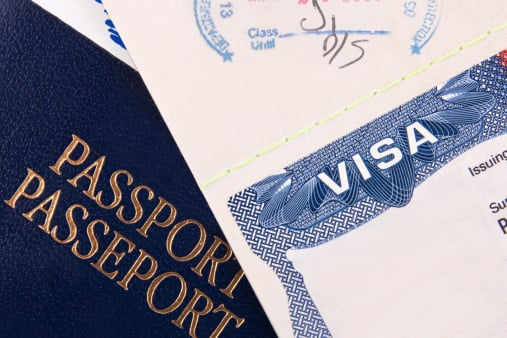Help us to know you better
Thanks for visiting TopUniversities.com today! So that we can show you the most relevant information, please select the option that most closely relates to you.

Thanks for sending your response.
Your input will help us improve your experience.You can close this popup to continue using the website or choose an option below to register in or login.
Already have an account? Sign in
Save
Types of US Student Visa
By Hasna Haidar
Updated February 20, 2024 Updated February 20, 2024If you’re planning to study abroad in the US – either for a full degree or a shorter period – you’ll need to apply for a US student visa. Here’s a quick guide to the three types of non-immigrant student visas for studying in the US.
F Visa
This type of US student visa is for international students who are intending to pursue an academic degree at an accredited US college or university, or to study English at a university or intensive English language institute. There are three types of F visa:
Students with F-1 visas can work on-campus for 20 hours a week or less. Students wishing to work longer hours and off-campus must gain prior authorization from the US Citizenship and Immigration Services (USCIS) – they may also grant work authorization for Curricular Practical Training (CPT) and Optional Practical Training (OPT) for a total of twelve months, without accruing more than 90 days of unemployment.
M visa
The second category of US student visa is for international students who want to engage in non-academic or vocational study or training at an institution in the US. There are three types of M visa:
M-1 students are admitted to the US for a fixed time period – the length of their training program plus any Optional Practical Training. They must not stay in the US for longer than one year except in the case of extensions due to medical reasons. M-1 visa holders are not allowed to work on- or off-campus while studying and may not change their status to F-1.
J visa
Finally, this third type of US student visa is for international exchange visitors participating in programs in the US that promote cultural exchange. Whether it is to obtain medical, business or other training, all applicants must meet the eligibility criteria of the program in question and be sponsored by a private sector or government program. Holders of J visas usually stay in the US for a short period of time, perhaps one or two semesters. There are two types of J visa:
J-1 visa holders will be subject to the two-year home-country physical presence (foreign residence) requirement if they are part of a government-funded exchange program, doing graduate medical educational or training or if their training is listed in the Exchange Visitor Skills list (i.e. the J-1 visa holder’s home-country has deemed their field of specialized knowledge or skills as necessary to the development of the country). This requirement means J-1 visa holders will need to return to their home country for at least two years at the end of their exchange visitor program.
Derivative visas
Holders of F-2, M-2 and J-2 visas are also allowed to study in the US provided they meet their chosen institution’s criteria. They do not have to apply for an F-1, M-1 or J-1 visa, but can apply if qualified.
J-2 visa holders can enroll as recreational or degree-seeking students, either full- or part-time, and discontinue their program at any time. They can also petition for a change to F-1 student status if they haven’t completed their academic program by the time the principle J-1’s status has ended. However, this is only if the J-1 visa holder is not subject to the two-year home residency requirement.
F-2 and M-visa holders are not allowed to work, and must secure an appropriate work visa if seeking employment. J-2 visa holders may request work authorization from USCIS by submitting form I-765.
This article was originally published in December 2013 . It was last updated in February 2024
Want more content like this Register for free site membership to get regular updates and your own personal content feed.
Share via
Share this Page
Our expert teams can help start your academic journey by guiding you through the application process.
Related Articles Last year
German visas: Guide for Indian students
The world's top 100 universities
Stanford Tops New WSJ/THE US College Rankings
UK visas: Guide for Indian students
US Report: Best Chances of Finding Graduate Jobs Online
US Universities in the Rankings: Public Versus Private
Most Shared Last year
The world's top 100 universities
Ranked: The top 100 universities in the USA
9 top universities offering free online courses
Top US universities for business & management
International scholarships to study in the US
Top Film Schools Around the World
Most Read Last year
The world's top 100 universities
Ranked: The top 100 universities in the USA
9 top universities offering free online courses
10 of the oldest universities in the US
Top medical schools
Top universities in New York City